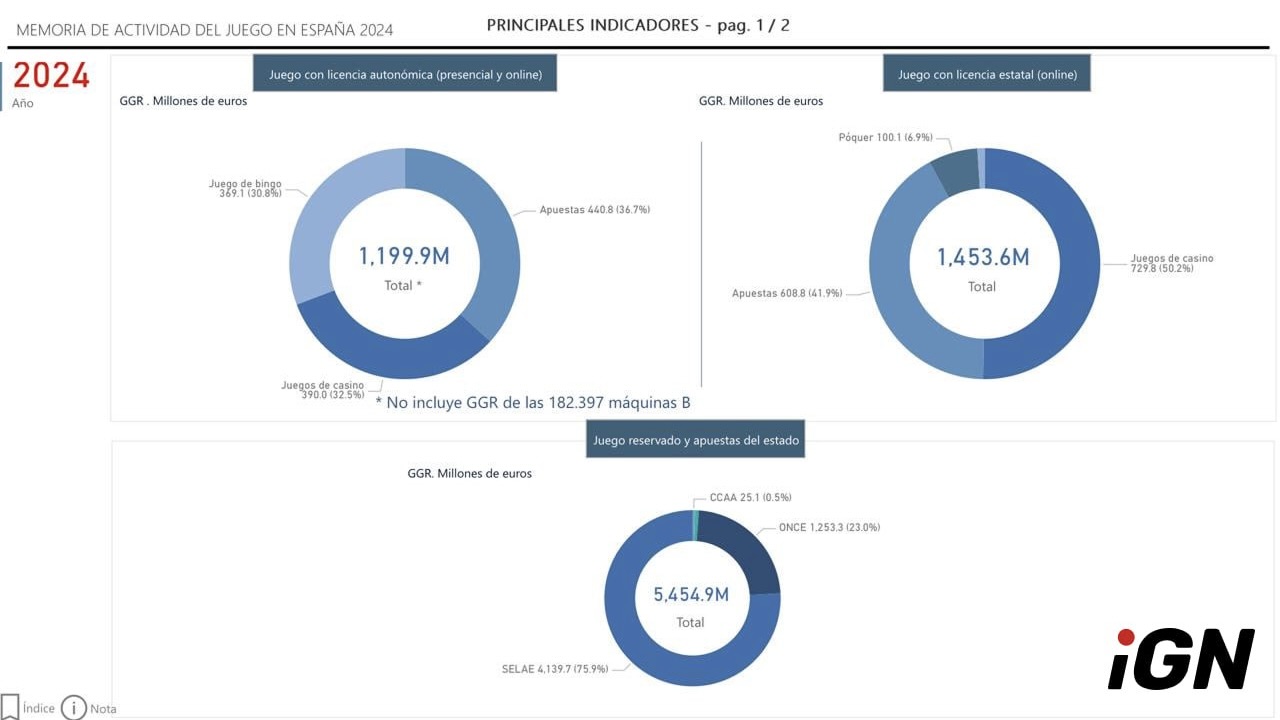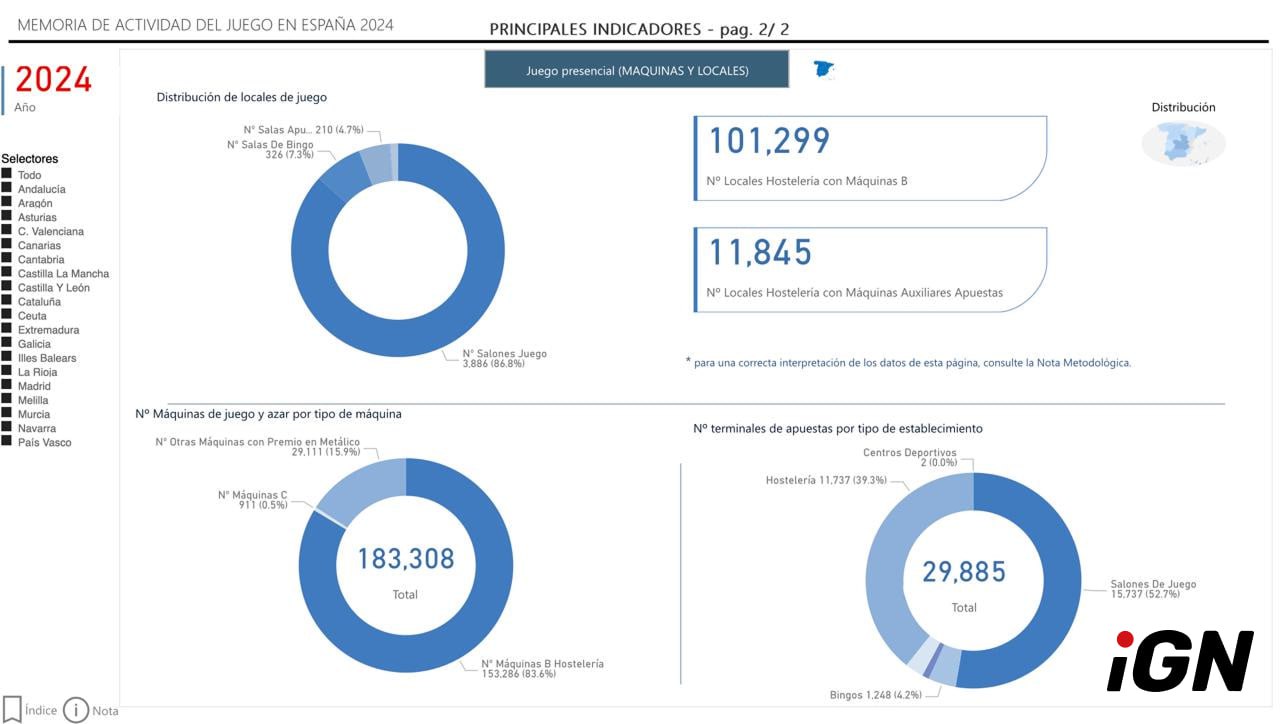Spain’s iGaming Market: Growth and Trends in 2024

The Directorate General for the Regulation of Gambling (DGOJ) has released its 2024 report on the performance of the iGaming sector in Spain.
Growing Player Base and User Activity
2024 was a record-breaking year for online gambling in Spain. Following the partial repeal of Royal Decree 958/2020 in April and the return of welcome bonuses, the market experienced significant growth:
- 1.99 million players — total registered users (+21.63%)
- 459,000 new players throughout the year
- 1.43 million — average monthly active accounts (+23.48%)
- 152,000 — new monthly accounts (+34.73%)

Player demographics remained consistent, showing stable trends:
| Metric | Value |
|---|---|
| Male | 83% |
| Female | 16.85% |
| Players aged 18–45 | 85.7% |
Operator Revenue in 2024
Total GGR from land-based and online gambling reached €8.1 billion, with €1.45 billion coming from the online segment (+17.6%).
Revenue breakdown by segment:
- €730.7 million — online casino (+16.96%)
- €608.8 million — online betting (+23.8%)
- €100.1 million — online poker (-4.99%)
- €14.9 million — online bingo (+3.96%)
Online poker was the only segment to see a decline, while sports betting posted the highest growth, driven by the popularity of live betting.
Operator Marketing Spend
Total marketing expenditure reached €526 million, with the largest investments in:
- €261 million — promotions
- €203 million — advertising
- €56 million — affiliate marketing
- €5.45 million — sponsorships
Figures were published by the Directorate General for the Regulation of Gambling.
Possible Regulatory Changes
Minister Pablo Bustinduy is considering a new ban on welcome bonuses via an amendment to the customer service law. This could once again shift marketing strategies and potentially slow down sector growth.
Key Trends
- Welcome bonuses sparked a surge in new player registrations
- Live betting was the main growth driver in the sports betting segment
- Female participation remains significantly lower than male
- The majority of users are under 45 years old
